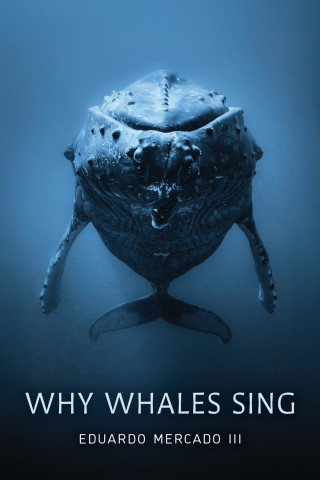
Johns Hopkins UniversityEst. 1876
America’s First Research University
Why Whales Sing: Rethinking the Songs of the Sea

For decades, scientists and music lovers alike have been captivated by the haunting beauty of whale songs. Their long, patterned sequences of sounds can carry for miles through the ocean. But what if those mesmerizing melodies aren’t really “songs” at all? In his revolutionary new book, Why Whales Sing, bioacoustician and cognitive scientist Eduardo Mercado III challenges what we think we know about humpback whales and their mysterious vocal behavior.
Based on decades of research on neuroscience, marine biology, and acoustics, Mercado offers a bold new theory: whales may not be singing for love, but listening for life. Whales are the only mammals known to sing continuously for ten hours or more, changing their complex songs each year. For fifty years, most scientists have explained this behavior as a kind of aquatic serenade—a mating display akin to the courtship songs of birds. But Mercado asks a simple, provocative question: If whale songs are meant to attract mates, why do whales sing when no one’s listening?
Mercado argues that humpback whales may be using their vocalizations not as music, but as sonar—a sophisticated form of echolocation more commonly associated with dolphins and bats. By streaming continuous sounds and analyzing the echoes that return, whales may be “seeing” their world through sound, tracking the movements of distant whales and mapping underwater landscapes invisible to the eye. “By incessantly streaming sounds while listening closely to the returning echoes,” Mercado writes, “whales may be actively tuning their brains in ways that allow them to monitor the movements of silent whales located miles away.”
Mercado’s theory reframes one of nature’s great mysteries, taking readers from the Cold War origins of whale song recordings to the frontiers of neuroscience and marine cognition. Along the way, he tells a deeply human story about how revolutionary ideas emerge and evolve. As a former IBM engineer turned cognitive scientist, Mercado brings a rare mix of technical precision and philosophical curiosity. Part scientific memoir, part intellectual adventure, this exploration of “acoustic intelligence” challenges how we think about the very nature of perception, communication, and consciousness. If whales are using their songs as long-range sonar, then the oceans are alive with echoes and represent a dynamic world of sound and reflection where whales navigate, connect, and perhaps even think differently than we ever imagined. Why Whales Sing is a must-read for readers fascinated by animal intelligence, marine life, and the mysteries of communication. With poetic prose and scientific rigor, Mercado transforms our understanding of the deep and reminds us that to truly know the ocean, we may need to learn how to listen differently.







